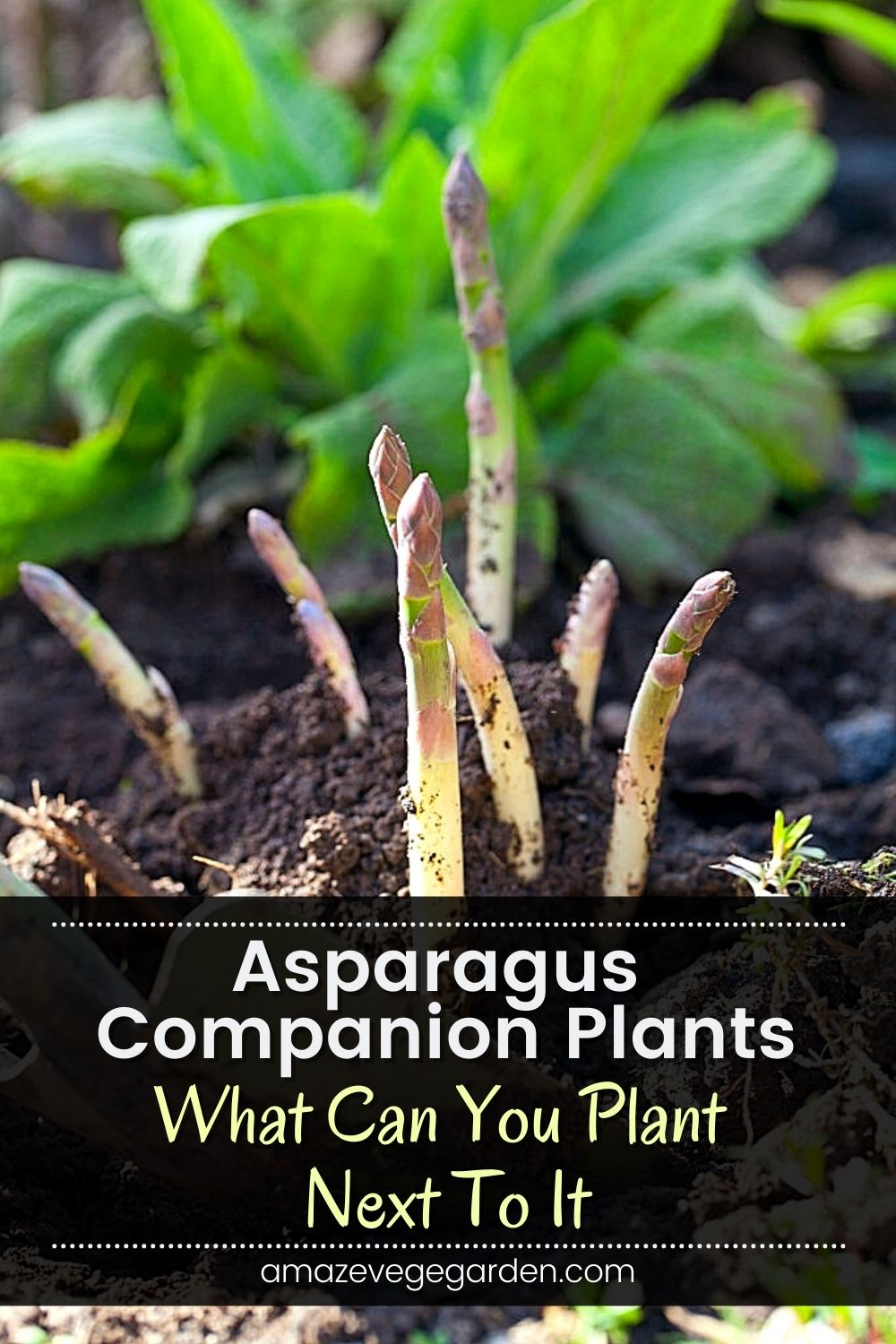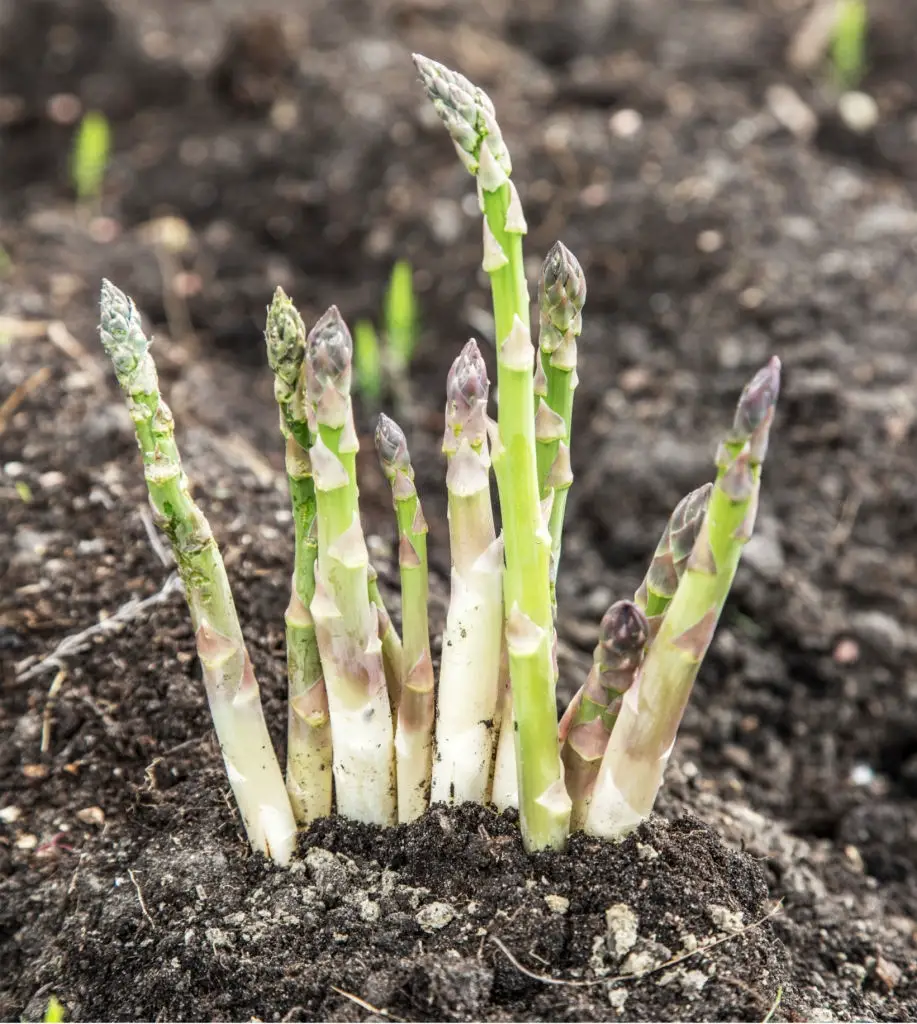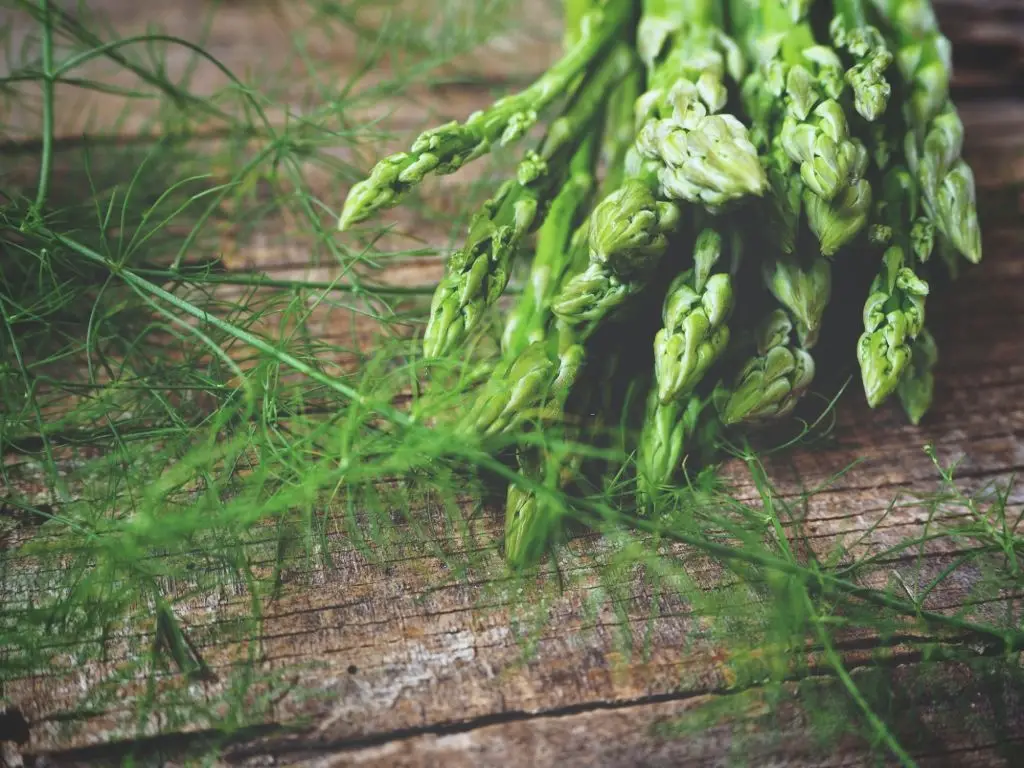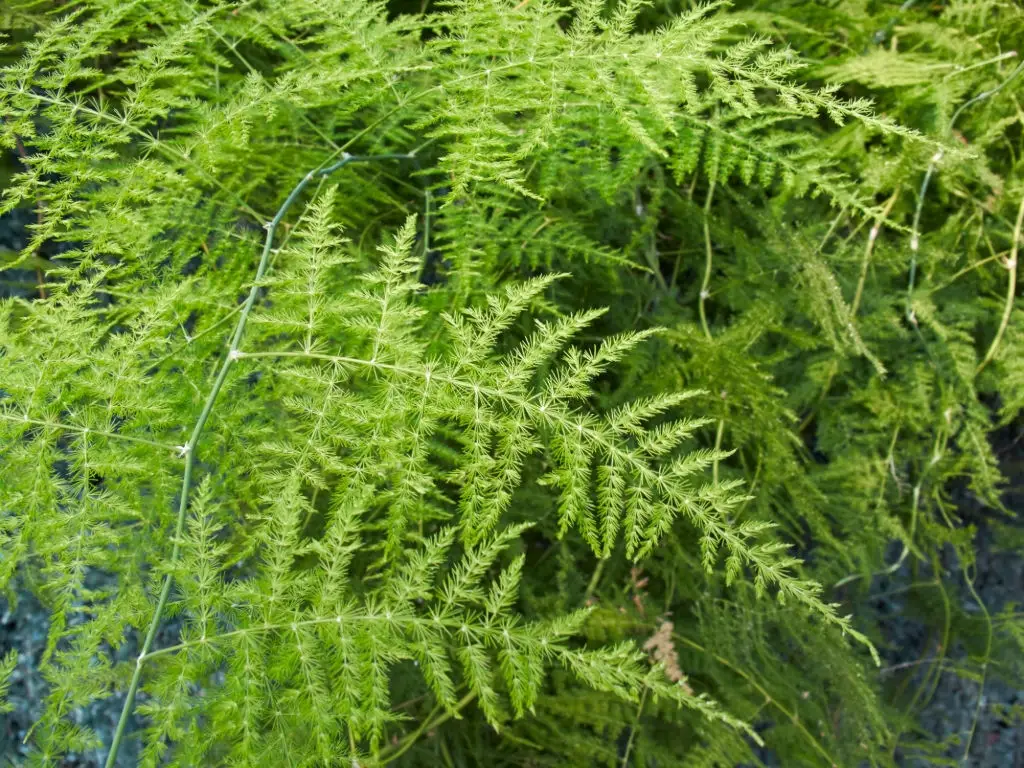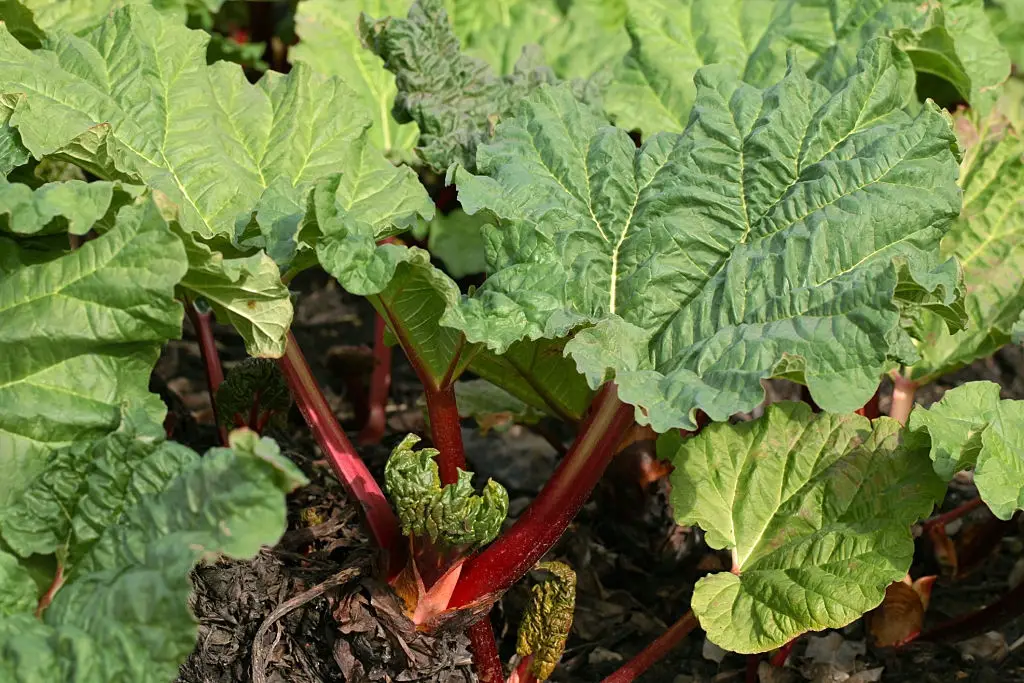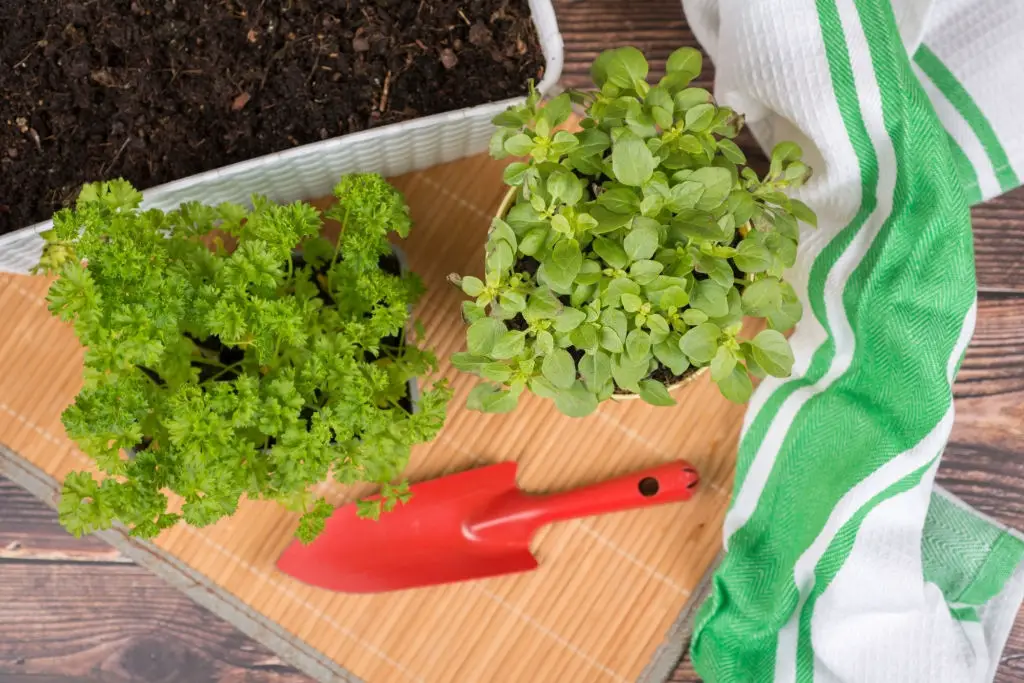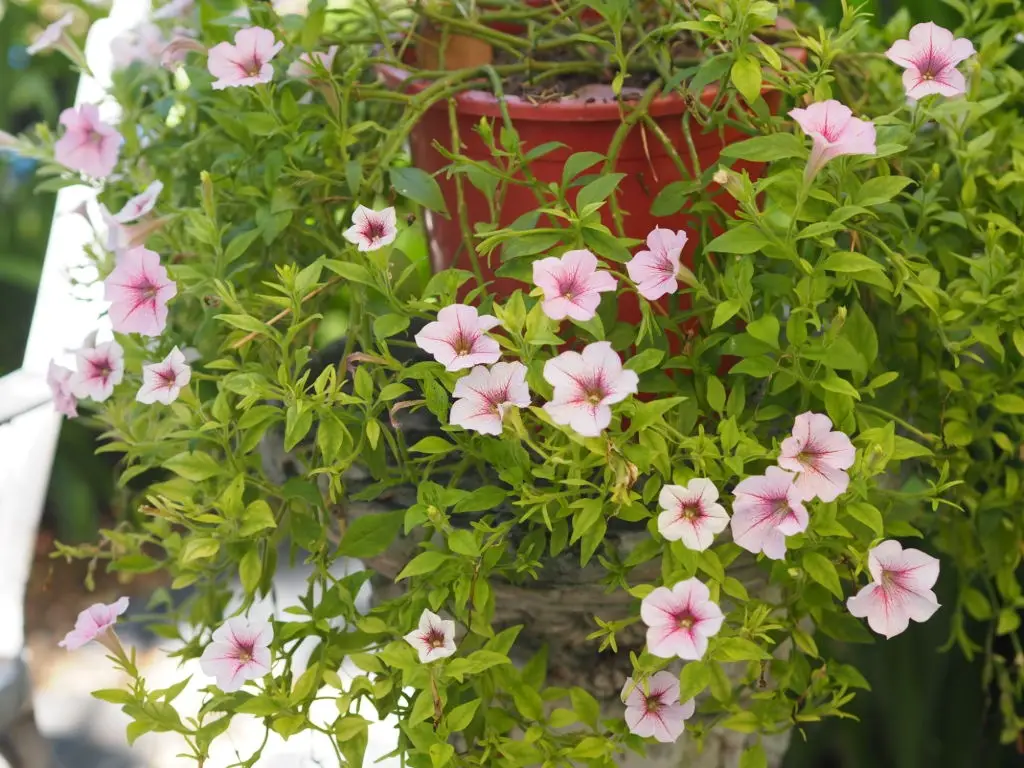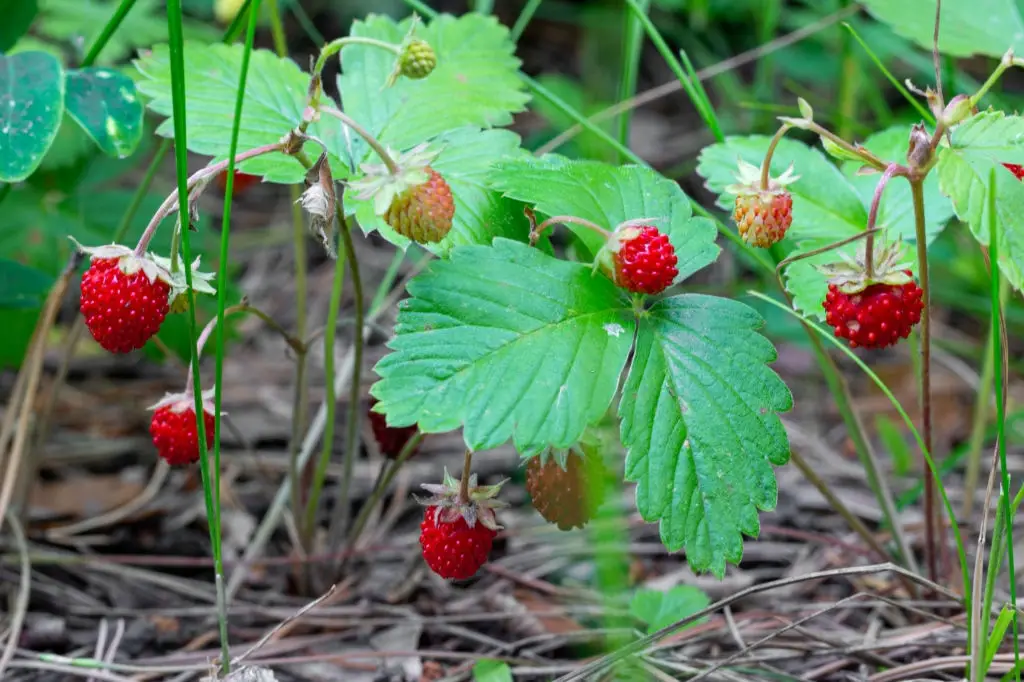Planting companions in the garden can achieve many purposes, such as maximizing garden space utilization, attracting beneficial insects and pollinators, and keep pests away from other crops.
Companion planting in the garden can also provide shade for other plants, covering the soil’s surface with edible plants to crowd out weeds and even help improve the yield and flavor of the crops.
Planting Asparagus
I have so many people who told me they have tried to plant asparagus year after year, but they can’t get it to grow. They are keen to know the trick to grow the plant.
If you ever wanted to have asparagus growing in your yard, it’s actually not that hard. You need to know asparagus is a really long-lived perennial. It can live for over 25 years. So when you prepare the ground for asparagus, you will want to grow it properly. If you succeed in growing the plant, it will provide you the crop for many years.
When growing asparagus, you need to prepare suitable soil. Asparagus wants really rich and deep soil. So you have to spend some time to get that soil.
Asparagus plants don’t like competition. So you have to keep weeds out. They want their roots to stay cool all the time. So it would help if you mulched them frequently. Keep the soil evenly moist. Don’t let them dry out while they’re producing.
Some Good Companion Plants For Asparagus
To increase the chances of growing asparagus in your garden, you should think about planting some companion plants together.
Companion plants grow together because they are beneficial. For example, white geranium grown with asparagus will repel Japanese beetles. Good companion plants for asparagus are ferns, tomatoes, rhubarb, parsley, basil, and petunia.
Ferns
When you are planting asparagus, you will notice some ferny stuff that comes up after the spears of the plants. You need to know that this fern is vital to asparagus. When the asparagus grows up, if you’ve got the fern at the front flowerbed, it’s gonna be kind of unsightly, but if you cut it off, your asparagus plants will die.
This is because the fern is what feeds the roots of asparagus. Therefore, you have to let that ferny grow. In subsequent years, it’s going to get bigger and bushy. You can put it somewhere without bothering it because you have to have this for the plant’s health. If you do all these things, you’ll have years and years of enjoyment from your asparagus plants.
Tomatoes
The Solanaceae in tomatoes helps Asparagus fight the Asparagus beetle. If there are too many Asparagus beetles, they will be attracted to solanine and controlled.
Chemicals from asparagus can also effectively control nematode pests during tomato growth and development, including root-knot sting, stubby roots, and grass varieties.
In my garden, I planted asparagus in rows on one side. After harvesting the tips of young shoots in early spring, I planted tomatoes on both sides of the asparagus.
I found that these two plants would mutually benefit each other. Planting tomatoes can also suppress the overgrown weeds next to asparagus. Don’t chop off the leaf of Asparagus too much until late autumn, and you need the top to grow so that new shoots will emerge in spring.
Rhubarb
Asparagus is good for rhubarb. Because the asparagus plants are taller than rhubarb, therefore, asparagus can act as a good shade for rhubarb.
Rhubarb is another perennial that produces food, and it requires almost the same planting conditions as asparagus. It needs rich soil. So put lots of organic material into the soil. Mulch it around, keep the weeds from growing, and keep the soil evenly moist.
It would help if you waited until three years old before you started taking anything off of it. When harvesting, don’t take more than half of the crop because it’s got to have all these leaves to feed the roots.
When you harvest rhubarb, you can reach down at the bottom, twist, lift, and pulls it off from the root. It makes space for new rhubarb to come out. With this, you will be able to enjoy fresh rhubarb year after year.
Parsley and Basil
Planting asparagus and parsley together can give each other vitality. Planting asparagus and basil are also good companion plants.
Parsley and basil are plants that can attract maligned insects to the garden. In addition, they can also help to repel the asparagus beetles and other pests that might harm tomato hornworms which are asparagus guardians.
Another good thing about parsley and basil is they can attract pollinators to all their nearby companion plants.
Petunia
Petunia can repel asparagus leaf beetles, leafhoppers, aphids, tobacco moths, ladybugs, and other garden pests.
Plants You Should Not Grow Next To Asparagus
Even though many plants can be companion plants for asparagus, but there are also some plants that you should avoid planting next to asparagus. This is because they can do more harm than good to asparagus.
Strawberries
In addition to aesthetics (because they tend to grow together), strawberries and asparagus are really not good companion plants.
It would be best if you grew asparagus in neutral to alkaline soil. At the same time, strawberries prefer soils that are slightly more acidic than typical garden soils.
If you really want to plant strawberries and asparagus together, you can plant flowers like Asters or Nasturtium between them. Asters or Nasturtium will repel cucumber beetles that feed on asparagus. Separation can also help you remember the different pH requirements of these two plants.
Other Plants
Other than strawberries, you should also avoid planting asparagus together with peas, beans, garlic, sage, and onions. If you want to grow these plants, you need to separate them from asparagus well. These plants can be antagonistic to asparagus because of chemical or flavor interactions.
Although asparagus is a perennial plant that cannot be planted and harvested in a single season, you can plant pepper plants after harvesting asparagus in summer to optimize field utilization.
Did you find this post useful? Would you like to get back to it later? Save THIS PIN below to your vegetables or gardening boards on Pinterest! Thanks
